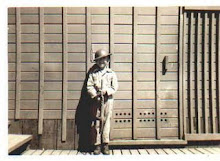Terry Fox statue in Beacon Hill Park, Victoria, British Columbia
Terrance Stanley "Terry" Fox; (July 28, 1958 – June 28, 1981) was a Canadian humanitarian, athlete, and cancer research activist. In 1980, with one leg having been amputated, he embarked on a cross-Canada run to raise money and awareness for cancer research. Although the spread of his cancer eventually forced him to end his quest after 143 days and 5,373 kilometers (3,339 mi), and ultimately cost him his life, his efforts resulted in a lasting, worldwide legacy. The annual Terry Fox Run, first held in 1981, has grown to involve millions of participants in over 60 countries and is now the world's largest one-day fundraiser for cancer research; over C$500 million has been raised in his name. Fox ran with an unusual gait, as he was required to hop-step on his good leg due to the extra time the springs in his artificial leg required to reset after each step.
Fox was a distance runner and basketball player for his Port Coquitlam, British Columbia high school and Simon Fraser University. His right leg was amputated in 1977 after he was diagnosed with osteosarcoma, though he continued to run using an artificial leg. He also played wheelchair basketball in Vancouver, winning three national championships.
In 1980, he began the
Marathon of Hope, a cross-country run to raise money for cancer research. Fox hoped to raise one dollar for each of Canada's 24 million people. He started with little fanfare from St. John's, Newfoundland in April and ran the equivalent of a full marathon every day. Fox had become a national star by the time he reached Ontario; he made numerous public appearances with businessmen, athletes, and politicians in his efforts to raise money. He was forced to end his run outside of Thunder Bay when the cancer spread to his lungs. His hopes of overcoming the disease and completing his marathon ended when he died nine months later.
In the following months, Fox received multiple chemotherapy treatments; however, the disease continued to spread. As his condition worsened, Canadians hoped for a miracle and Pope John Paul II sent a telegram saying that he was praying for Fox. Doctors turned to experimental interferon treatments, though their effectiveness against osteogenic sarcoma was unknown. He suffered an adverse reaction to his first treatment, but continued the program after a period of rest.
Fox was re-admitted to hospital on June 19, 1981, with chest congestion and developed pneumonia. He fell into a coma and died at 4:35 a.m. PDT on June 28, 1981, with his family by his side. The Government of Canada ordered flags across the country lowered to half mast, an unprecedented honor that was usually reserved for statesmen. Addressing the House of Commons, Trudeau said, “It occurs very rarely in the life of a nation that the courageous spirit of one person unites all people in the celebration of his life and in the mourning of his death ... We do not think of him as one who was defeated by misfortune but as one who inspired us with the example of the triumph of the human spirit over adversity.”
Fox was the youngest person ever named a Companion of the Order of Canada, the highest rank of the nation's highest civilian award. He won the 1980 Lou Marsh Award as the nation's top sportsman and was named Canada's Newsmaker of the Year in both 1980 and 1981. Considered a national hero, he has had many buildings, roads and parks named in his honor across the country.
Terry Fox: A Story of Hope
.JPG)

.JPG)




.jpg)
.jpg)
.jpg)
.jpg)
.jpg)











